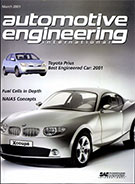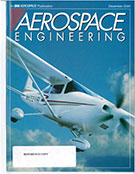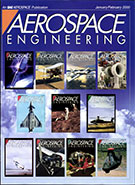Magazine

Aerospace Engineering 2001-07-01
2001-07-01
Giving ice the boot Atmospheric icing was for many years one of the majoy threats to aircraft safety- and it potentially still is. Researchers at Dunlop Aviation Ice Protection and Composites continue their development of deicing and anti-icing technologies. The art of wing assembly Airbus Industries investigates new technologies and techniques for improving quality and reducing cost of its wing box assemblies. Affordable engines for small aircraft A look into the new technologies developed for small-aircraft engines as extensions to the cooperative agreements under the NASA General Aviation Propulsion program conclude.










